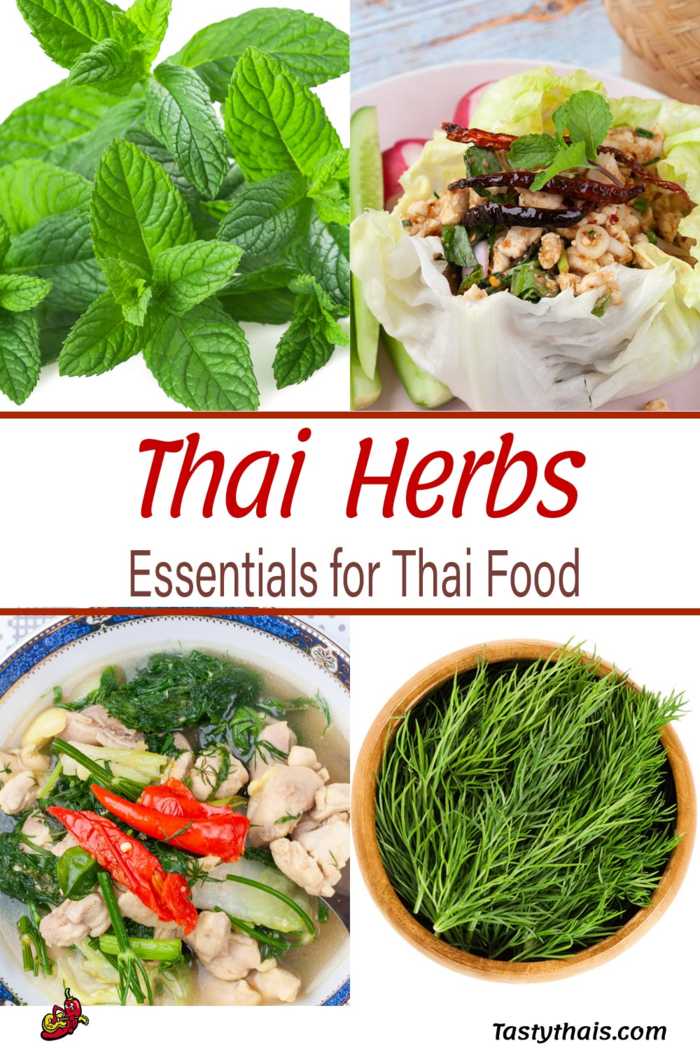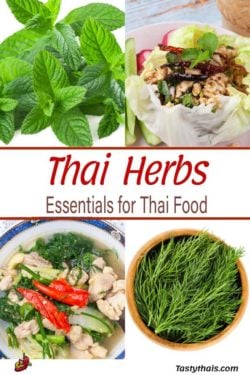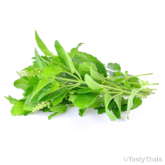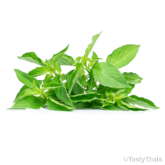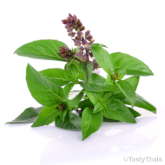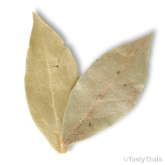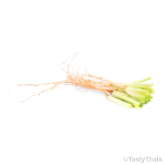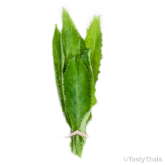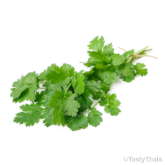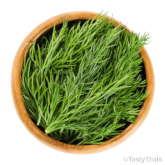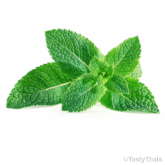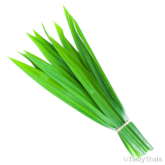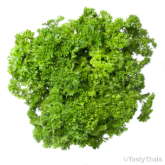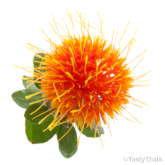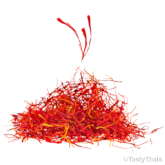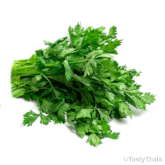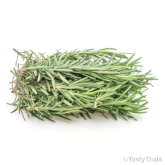Thai herbs are the partner of Thai spices and another prime piece of the jigsaw of cooking excellent Thai food. Thai herbs and spices go together like the right key for a lock as together they open the blueprint to great Thai food.
Herbs do not generally add spiciness to a dish though there is some overlap as certain spices, vegetables, and fruits are sometimes referred to as herbs. There are certainly plenty of herb focussed recipes which is why not all Thai food is spicy.
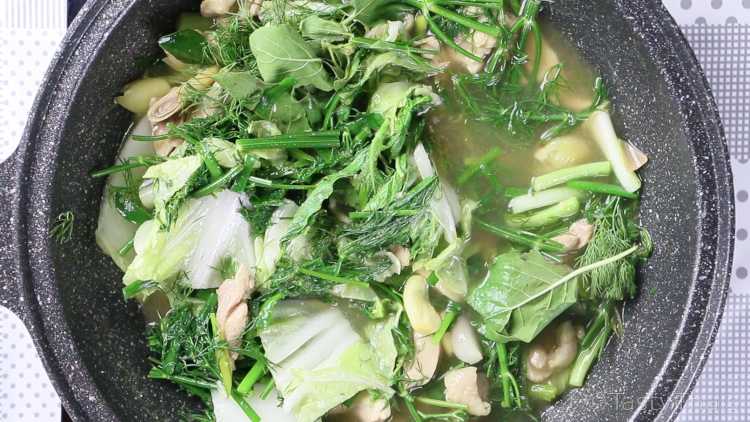
Our broader ingredients page has a definition of herbs which deserves a place on this page too.
What is an Herb?
Herbs are the flowers, leaves, stems of plants that are used fresh and often chopped but for practicality are often dried, flaked, or frozen. Herbs are used to enhance the flavor and depth of taste of a dish.
Don’t forget that the flavors of Thai food come from the interaction and blend of Thai herbs and spices as well as Thai seasonings – sauces and spice mixes.
A super brief overview of the history of Thai food is found over on the Thai spices page so pop over there to put things into context if you are interested. Suffice to say that many of the herbs used in Thai cooking are also found in the cuisines from the neighbouring countries.
Table of Thai Herbs
Notes: The usage column gives an idea of how often a herb is used. The Note column links work similar to the Table of Contents. The name of the herb links to an online source (Amazon, Walmart etc,) where you can get a better look at the herb, the latest information, and availability.
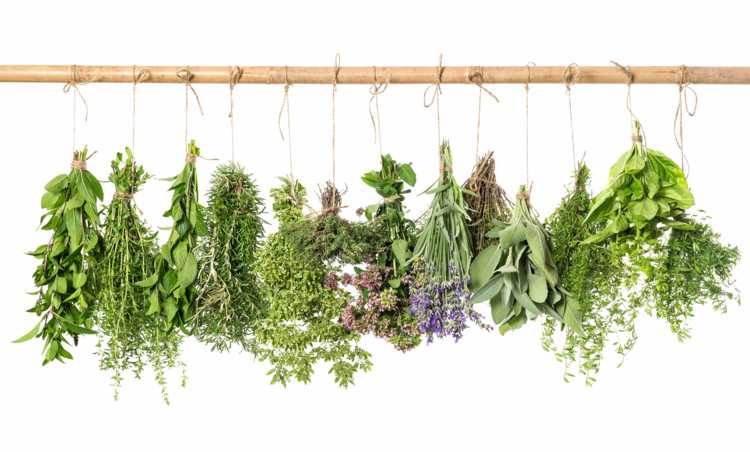
Thai Herbs A – C
Holy Basil
Holy basil is called Bai Krapow or Gra Prow (and several other spellings) in Thai.
There are many varieties of basil with differing regions having different types locally available.
Holy basil has a slightly peppery spice-like taste which is typically less strong than sweet or lemon basil.
It is plentifully available in the local markets and very frequently used to add flavor and color to Thai dishes.
Pad Krapow is probably the best known Thai recipe that prominently features this herb – and it is a favorite for good reason. You cannot make pad krapow with sweet basil – don’t bother trying.
Holy basil is also known for many health benefits and is a favorite herb for Ayurvedic practitioners.
Lemon Basil
Lemon basil is less used than holy or sweet basil in Thai recipes but is still quite commonly used and certainly found daily at the local Thai markets.
With a citrus smell and taste it makes a great herb when you want to provide a herbal depth and citrus twang to a dish.
We use lemon basil as an ingredient in some of our cauliflower rice dishes as it works brilliantly in those. It also pairs well with seafood dishes and in soups.
You might find it quite difficult to find locally in which case why not grow your own. There’s nothing like fresh!
Sweet Basil (Thai Basil)
Sweet basil is the anise smelling and tasting basil that is the most commony used in Thai dishes for its aroma and the flavour it adds too dishes. It is called Bai Horaphra in Thai.
It is used with about the same frequency as holy basil simply and in wide number of recipes like pumpkin chicken coconut curry and hor mok dishes.
Thai cooking features basil (along with coriander) as a core herb and it really needs to be used fresh.
The best way around searching for supplies is just to grow your own – the seeds are readily available and it is easy to grow too!
Sweet basil is not interchangeable with holy basil or lemon basil. The taste complexes are widely different.
Bay Leaves
You might be surprised to see bay leaves in this list but these aromatic leaves are used dried and readily available as they are used by Thai chefs in various dishes.
Soups and stocks are favorite uses but they are also sometimes added to curries like massaman curry, and quite authentically, for that extra touch.
Coriander Root
Coriander root is an essential ingredient and used whole though often smashed, or crushed if you prefer, with a mortar and pestle to release the flavor.
It is called rak pak chi in Thai.
It is extensively used in very many Thai dishes of all descriptions such as Duck Red Curry and an ingredient in quite a lot of sauces and dips.
You can grow coriander at home quite easily but if buying coriander for the leaves then certainly try to find stems with roots still on.
Cut these off to use in your Thai recipes – you can wash and freeze them if you are not planning to use immediately. They freeze very well for up to six months but unlikely to last that long if you cook Thai food frequently!
Coriander/Cilantro Leaves
Coriander leaves are another Thai essential herb that is used for flavor as well as garnish.
You will find coriander in upwards of 80% of Thai recipes and it is always used fresh. Recipes such as Khao Mok Gai and Thai Egg Fried Rice are just a couple of examples.
It really is necessary that you try to find a local supplier if you are not excited to grow these herbs yourself – it’s so worth it though.
Vietnamese Coriander
This is the same as culantro so please see that entry below.
Culantro
This is sometimes called Vietnamese Coriander or sawtooth coriander and is the same herb. It is called pak chi farang in Thai.
Culantro is used in Vietnamese and Cambodian cuisines more often than it is used in Thailand.
That said it is still widely used and especially in northern Thai cuisine which is quite significantly influenced with those cultures.
Northern Thai cuisine does use a few ingredients more so than the central and southern areas so if you want to cook Larb or some of the other Isaan dishes then you will need to grab this herb.
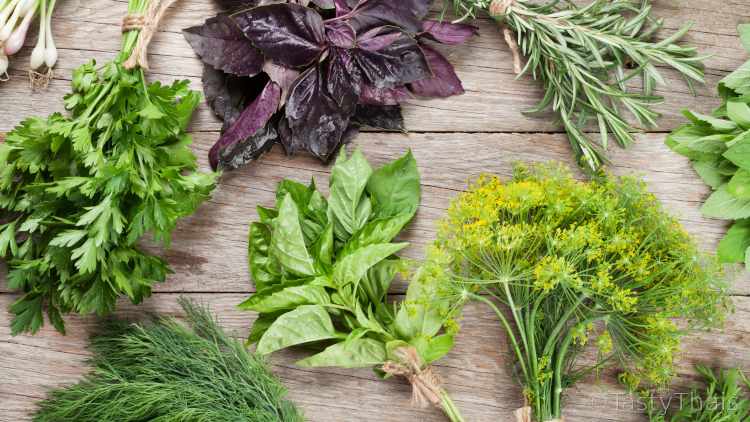
Thai Herbs D-Z
Dill
Dill weed – I hate calling it that – is a strong tasting slightly anise tasting herb that is commonly used as a herb whilst steaming fish dishes and soups like kaeng om – Thai herb soup.
It is also commonly used for pickling and can be used sparingly in salads as it has quite a strong flavor.
Pak Chi Lao is the Thai name.
Mint
We probably all know what mint is and it is used extensively in Thai cooking.
It can be used as a garnish for snacks such as Thai spicy cashews and is featured in the north-eastern Thai Larb dish.
It is also commonly a topping for various desserts and drinks such as lemongrass tea.
If you want to get it on holiday it’s called Bai Saraneh in Thai.
Pandan Leaves
Pandan leaves, Bai Toei for Thais, are widely used for their aroma to freshen rooms, left near shoe racks or on the kitchen table.
For cooking they are used in many Thai desserts both as a coloring such as in pandan custard fillings and to make the famous Thai Pandan Drink.
If you are not interested in those you can safely skip though.
Parsley
Curly leaved parsley is available in Thailand, and increasingly used to garnish dishes as well as for topping off garlic bread.
The open flat leaved Italian style parsly is also available but looks very similar to coriander but with larger leaves and even more like the Thai celery leaves that you find in local markets.
In fact some of these herbs look so similar it pays to give them a taste or smell them to be sure you are picking up what you expect.
Safflower
Safflower is a horrible oil but also a cheap substitute for saffron as it colors very similarly but has a very mild taste and none of the aroma of saffron.
It is not that common in Thai culinary circles as the poorer families won’t bother using it and the richer familes will jsut use saffron anyway.
It is used as a coloring commercially. You don’t need it really.
Saffron
This expensive spice is used in high class restaurants and amongst the rich for its delicate flavor and wonderful aroma.
It is a fabulous spice if you can afford it but not extensively used so you can skip unless you have a specific use for it.
Rosemary
Rosemary is increasingly used in Thai cooking and is grown commercially and widely available in city supermarkets.
As it is also used in various Western cusines you are likely familiar with it.
Expect to see it in a few recipes.
Thai Celery
Thai celery is similar to the top leaves on western celery. In the West we use the lower parts of celery and throw away the leaves.
Thai celery grows with thin stalks rather than the thick stalk version you see in the west but the leaves taste somewhat similar and can be substituted.
It is used to make Asian stocks and also as an ingredient in Tom soups such as Tom Yum Kung to add flavor.
Thai Parsley
Another name for culantro – please see that entry
